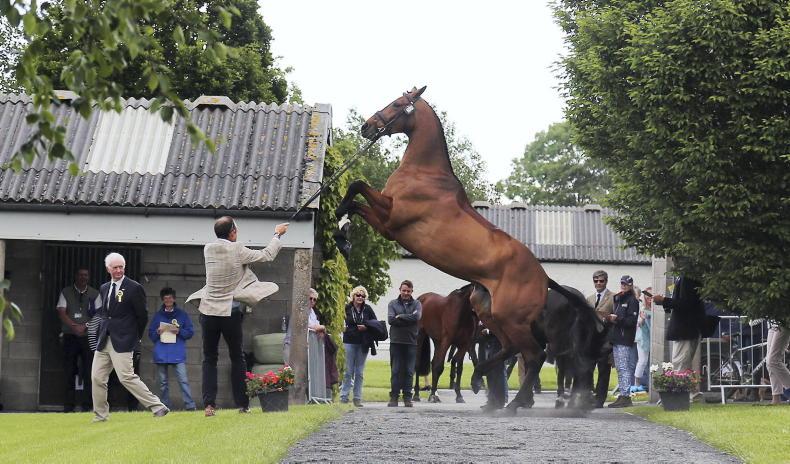DELVING into the multi-faceted world of horsemanship and horse training, one term frequently echoed is ‘get their respect’. Within the world’s equestrian and horsemanship arenas, this term stands out prominently and is often something we hear thrown around. Drawing parallels to our discussions on confidence in previous articles, ‘respect’ emerges as a complex term, its nuances often shaped by individual trainers’ and coaches’ beliefs and practices.
The dictionary definition of respect is, ‘a profound admiration for someone or something, stemming from their prowess, virtues, or accomplishments’, or ‘a thoughtful consideration for the emotions, desires, or entitlements of others’.
For me, the latter definition holds great significance, especially when forging meaningful connections with sentient beings, whether they be equine, human, or any other, and an important question to ask is: is the pursuit of a horse’s respect pivotal in their training regime and for the overall rapport between horse and human? Or perhaps, are we aspiring for a bond transcending the instillment of respect?
Blurred mix
It’s not uncommon to hear seasoned trainers talk about the significance of securing a horse’s respect throughout their training journey. However, interpretations of this can differ greatly. While some trainers might portray this concept in a negative or perhaps unpleasant light, others might resonate with my own perspective, and another might unintentionally convey a blurred a mix of the two.
Take for instance, a video I saw recently on a leading social media platform titled ‘Signs Your Horse is Disrespecting You’. This visual narrative spotlighted behaviours such as a horse’s reluctance and head throwing during bridling, or its shuffling around during girth tightening. These behaviours, amongst others, were talked about as signs of disrespect to the human, when actually, closer inspection more often than not reveals these behaviours as potential indicators of discomfort, or even simple communication gaps, rather than deliberate ‘disrespect’ to the human.
Horses are wonderful, amazing creatures, capable of learning and achieving incredible things. Ultimately, unless there is something very neurologically or hormonally wrong (or they’ve had a terrible human experience at some point in their lives) they are not out to get us, they are not looking to disrespect us, they are simply responding to their environment, the communication they are receiving, and whether or not their needs are being met.
For me, all relationships, across all species, should be based on and anchored in mutual respect and understanding, with an enrichment of empathy thrown in the mix. Gaining respect through dominance does not result in a solid foundation with horse or human, and can result in mistrust, stress, anxiety, ‘shutting down’ and inconsistent results in training.
Recalibrate
Perhaps, it’s time to recalibrate our approach. Instead of fixating on securing respect from our horses, our energies could be channelled into nurturing clear, consistent communication, aiming to cultivate the horse’s unwavering trust and focus. When confronted with behaviours hinting at ‘disrespect’, an enlightened approach might involve zooming out, looking at the bigger picture, and then delving deeper into the root causes, be it discomfort, communication barriers, or unmet needs.
In the horsemanship world, something you may also hear often, is advice to handlers to ‘get control of your horse by moving their feet’. This, like the word respect can be interpreted in a few ways. Imagine this scenario: a startled horse momentarily spooks and loses its connection with the handler. Prompt intervention from the handler, perhaps a hip disengage, realigns the horse’s trajectory, bringing them to a stop. Here, are we asserting our dominance over the horse’s mind and body, gaining our ‘control’ over them, or, are we orchestrating a recalibration of their focus, from the thing that startled them, back to you, their partner?
From my perspective, the latter resonates more authentically. By changing our tactics in this exercise and calmly asking them to redirect themselves, we effectively intercept the horse’s cognitive trajectory, restoring the lines of communication between horse and handler, and averting potential creation of new habitual behaviours.
By interrupting their thoughts of ‘oh no I’m scared and need to run away’ and the need to keep running, we distract them from that. By interrupting that thought and bringing them to a stop, allowing them to calm their nervous system, refocus on you, and then carry on with whatever exercise you were doing. If we just let them run each time, done enough times, that then becomes their habitual reaction to any stressors, whereas here, you are helping install a new, less dramatic and more grounded response.
At this point I think it’s vital to clarify that sidelining respect doesn’t imply lax boundaries. On the contrary, maintaining clear boundaries through consistent communication is paramount across all species. For example, if a horse invades a handler’s personal space, a closer examination might reveal reasons like inadequate/inconsistent training or dietary/routine changes, rather than outright ‘disrespect’. With patience, plenty of repetition, and exposure to different environments and stressors, one can guide and train the horse effectively, fostering emotional regulation and reinforcing trust, for both horse and human.
To conclude, my view is that respect, in its most literal sense, remains an inherently human construct, when it comes to working with our horses.
To genuinely elevate our equine relationships, championing their focus over conventional respect is paramount to our evolution with our equine partners. Such a stance promises deeper understanding, streamlined communication, and a harmonious coexistence together. Isn’t that the idyllic relationship that we’re all looking for?




 This is a subscriber-only article
This is a subscriber-only article
 It looks like you're browsing in private mode
It looks like you're browsing in private mode










SHARING OPTIONS: